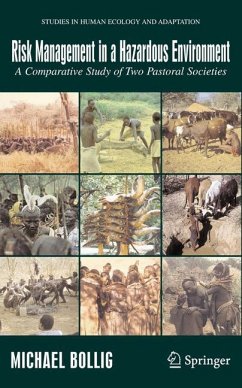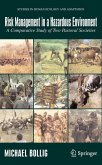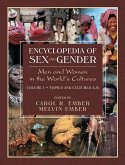A research focus on hazards, risk perception and risk minimizing strategies is relatively new in the social and environmental sciences. This volume by a prominent scholar of East African societies is a powerful example of this growing interest. Earlier theory and research tended to describe social and economic systems in some form of equilibrium. However recent thinking in human ecology, evolutionary biology, not to mention in economic and political theory has come to assign to "risk" a prominent role in predictive modeling of behavior. It turns out that risk minimalization is central to the understanding of individual strategies and numerous social institutions. It is not simply a peripheral and transient moment in a group's history. Anthropologists interested in forager societies have emphasized risk management strategies as a major force shaping hunting and gathering routines and structuring institutions of food sharing and territorial behavior. This book builds on some ofthese developments but through the analysis of quite complex pastoral and farming peoples and in populations with substantial known histories. The method of analysis depends heavily on the controlled comparisons of different populations sharing some cultural characteristics but differing in exposure to certain risks or hazards.
The central questions guiding this approach are: 1) How are hazards generated through environmental variation and degradation, through increasing internal stratification, violent conflicts and marginalization? 2) How do these hazards result in damages to single households or to individual actors and how do these costs vary within one society? 3) How are hazards perceived by the people affected? 4) How do actors of different wealth, social status, age and gender try to minimize risks by delimiting the effect of damages during an on-going crisis and what kind of institutionalized measures do they design to insure themselves against hazards, preventingtheiroccurrence or limiting their effects? 5) How is risk minimization affected by cultural innovation and how can the importance of the quest for enhanced security as a driving force of cultural evolution be estimated?
The central questions guiding this approach are: 1) How are hazards generated through environmental variation and degradation, through increasing internal stratification, violent conflicts and marginalization? 2) How do these hazards result in damages to single households or to individual actors and how do these costs vary within one society? 3) How are hazards perceived by the people affected? 4) How do actors of different wealth, social status, age and gender try to minimize risks by delimiting the effect of damages during an on-going crisis and what kind of institutionalized measures do they design to insure themselves against hazards, preventingtheiroccurrence or limiting their effects? 5) How is risk minimization affected by cultural innovation and how can the importance of the quest for enhanced security as a driving force of cultural evolution be estimated?
From the reviews: "This work concerns the experience and perception of hazards in the two pastoral economies, and their coping strategies for reducing uncertainties and minimizing the risks. ... The most impressive aspect of this work is the mass of detail that the author systematically brings to bear on his subject, drawing tables and illustrations from a wide range of sources. ... the book deserves to become a standard reference work for future research on this topic." (Paul Spencer, Anthropos, Vol. 102, 2007) "Michael Bollig takes an interdisciplinary approach to the Pokot of northern Kenya and the Himba of northern Namibia in this accessibile textbook ... . There are numerous charts and high-quality maps as well as satellite, historical, and present-day photographs. Transcriptions of interviews, prayers, and songs add another dimension to the impressive variety of topics covered. ... Risk Management in a Hazardous Environment will be welcome reading for graduate students and faculty ... . It would be an appropriate textbook for upper-level courses ... ." (Heidi G. Frontani, African Studies Review, Vol. 49 (3), 2006)








